In an earlier Micscape Image Gallery, I showed some images of common objects viewed between crossed polarisation filters. The first set were video stills from a security camera with an SLR camera lens attached. This second set is on a similar theme but uses a consumer digital camera in macro mode.
Two polarisation filters were used; one on the camera in a rotatable mount and one behind the subject. The camera filter is rotated to get the best effect. The polarised light shows up the imperfections and stresses in plastic objects found around the home and can create colourful effects.
I've added a few notes on how they
were taken, in case of interest.
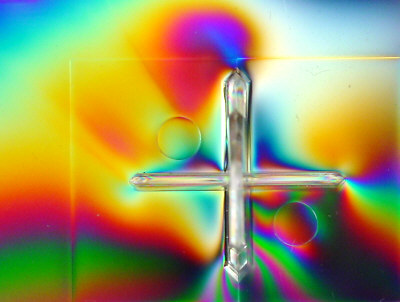
Music cassette tape case. Cassette support lug. |
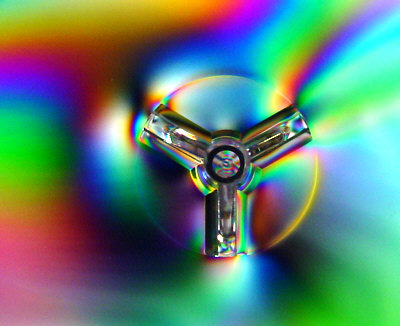
Music cassette tape case. Cassette support lug. |
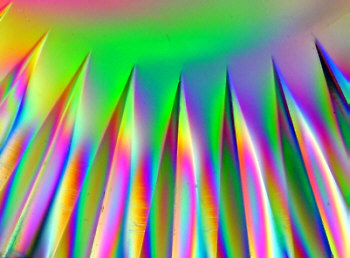
Detail from a plastic case to hold SLR camera filters. Many of these cases are sculpted so they can give interesting effects. |
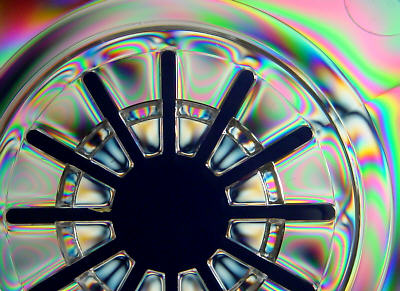
CD-ROM case. Support lug on insert. Most CD cases have opaque inserts but some are clear plastic. |
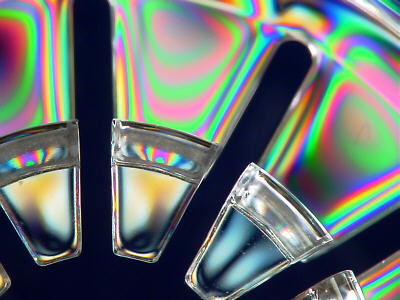
Subject as above. A closer shot of detail, 4+ and 2+ diopter lens on camera. |
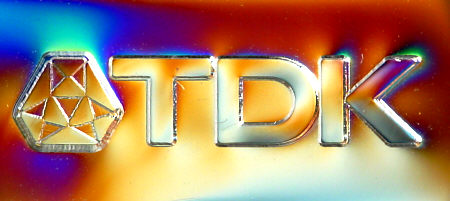
Music cassette case. Makers logo. 4+ and 2+ diopter lens on camera. |
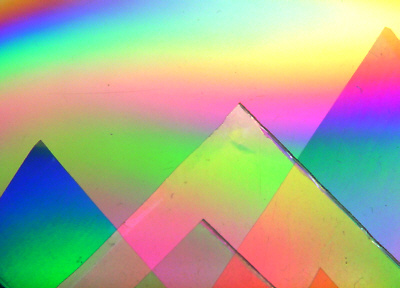
Pieces of cellophane plastic bag layered onto a music cassette case. Not all clear plastic is polar 'active'. Rotating the polarisation filter on the camera changes the colours. So one composition can give many colour effects. |
Notes:
The subjects were backlit with a piece of white A4 paper illuminated with a 65W photo-enlarger bulb. (These lamps give a good even white light for indoor macros ... and are cheap!).
The crude set-up below was used. Any supports to hand can be used, as all the clutter beyond the filter boundaries is cropped out of the image afterwards.
The 'gritty' effect in the colours
is not camera noise but an effect of the colour gradations.
| Set-up when photographing the
filter case above. One polar filter is mounted on and behind the plastic
case. The other is on the camera (a Sony S-75) and rotatable. Camera
on tripod.
White paper illuminated by enlarger lamp provides the backlighting. (There's a spirit level cube on camera top.) |
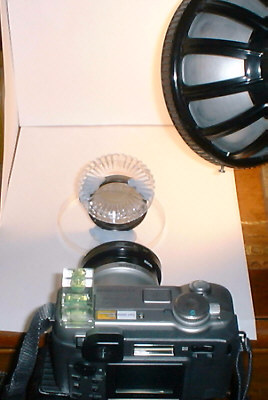 |
Slight adjustments if needed in highlight and mid-tone brightness were made in Picture Publisher v7. The backgrounds go black 'in camera' as the best colour effect is usually found when the two filters are 'crossed', (when the planes of polarisation are at right angles), thus allowing no direct light through. No colour adjustments were made.
As the effect relies on colour and shape rather than detail, I find small web images work best rather than large ones, which can start to show distracting imperfections in the subjects.